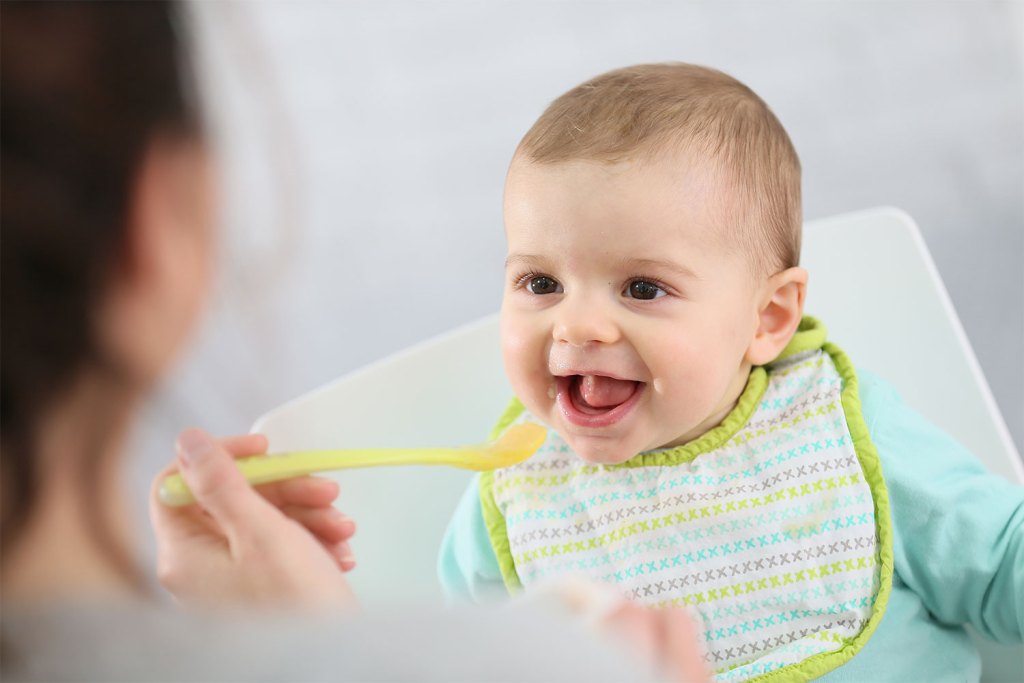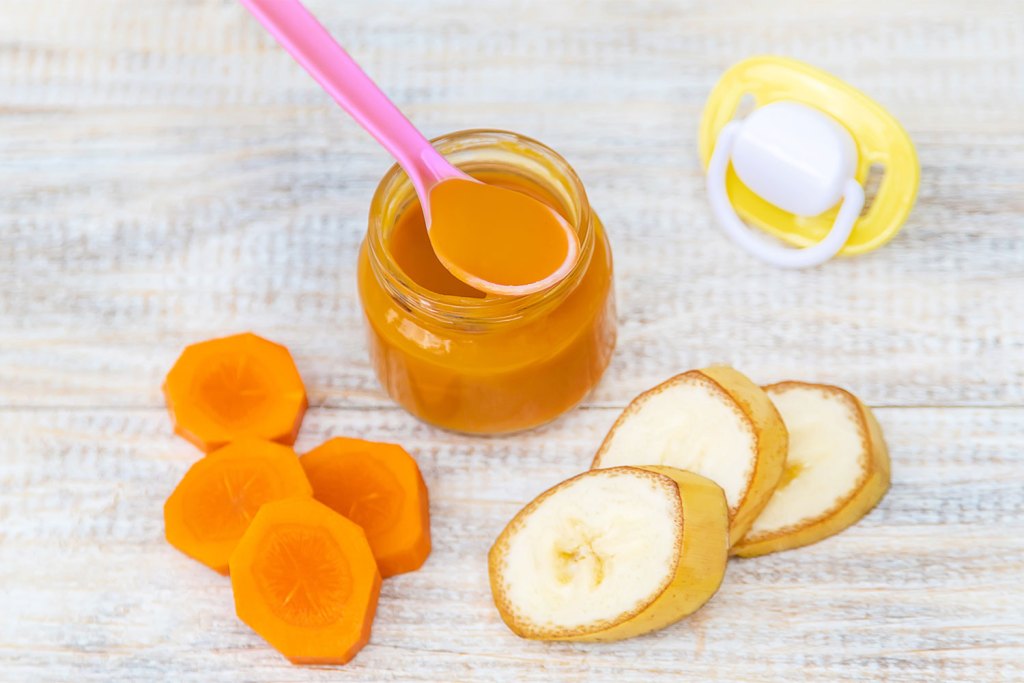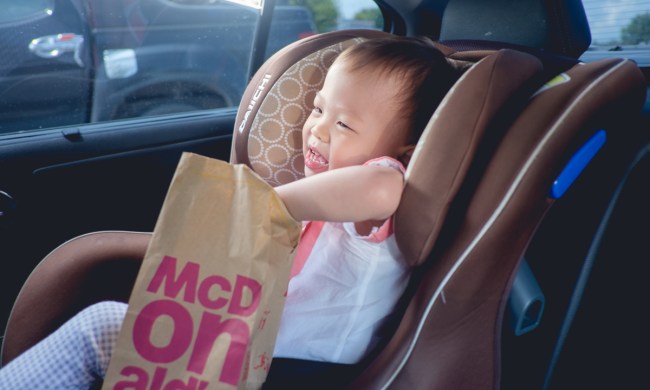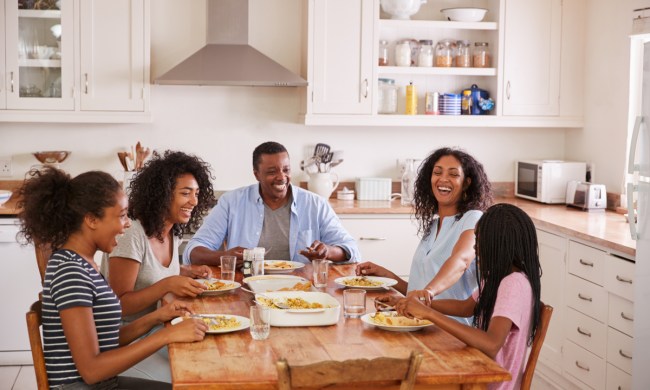Parents often wonder if they need to warm up baby food, which is typically first introduced around 4 to 6 months of age. Some worry that it must be heated before serving to make sure it is easier to digest or more palatable. Others believe that heating is necessary to kill any lurking organisms in the food that could make your baby sick. However, medically speaking, none of these concerned is warranted. Whether you heat your baby’s food or serve it cold is not so much a matter of health as it is one of preference.
Modern food safety standards for commercial foods, including baby food, ensure that it’s perfectly safe to take packaged baby food straight from the grocery shelf and feed it to your baby. The same applies to any prepared food you make so long as it has been thoroughly cooked and properly stored. You’ll simply want to follow the same rules you use for any food you serve, including refrigerating perishable items, wrapping food properly, avoiding cross-contamination, cooking meats thoroughly, and discarding unused items when they are no longer fresh.
Steaming is seen as the best way of cooking if your intentions are to reserve many nutrients in the food. The steamer works by allowing the water to boil up to a point where it vaporizes into steam. The steam is then used to heat and cook the food without removing any nutrients. The food will be separated from water during the whole time, which will result in a fine texture of your food. It is not the same when you boil the food in water and you end up leaching the food nutrients. It is now time to switch to a baby food steamer. The following are the benefit of baby food steamers.
Nutrient preservation
Nutrients are important to the baby’s growth, so you would want a product that guarantees that the baby will always eat healthy food. The baby food steamers will help in doing so. The steamers will preserve the water-soluble vitamins that would naturally occur in the food such as Vitamin B1, mineral salts, and Vitamin C maintain the food texture

Each fruit or vegetable will have a unique texture, and it is often lost when boiling it in water. All that can change when you pick to steam the food starting today. Many baby food makers have the steamer function, so steaming should not be a problem.
Great for purees
You can make great purees without having to crush all the fruits by using a blender or juicer. Simply steam the fruits and create a sauce from the steamed fruits.
The other ways of heating baby food
Microwave Heating
Many parents love the ease and convenience of the microwave for both heating and thawing homemade baby food. Whether or not you use the microwave to heat or thaw your homemade baby food is a decision only you can make.
To heat the baby food in the microwave, always transfer the amount of food you will be heating to a glass microwave-safe container. You should not use plastic to heat foods in the microwave. Heat the food in 15-second increments and stir after each heating. When the food has reached the temperature you desire, be sure to give one final stir so that no hot pockets are left to burn baby’s mouth.
Stove Top Heating of Homemade Baby Food
When heating baby food on the stovetop, choose a smaller saucepan and place the food into the saucepan. Gently heat the food using a low setting. Using the lower heat setting will ensure that you do not burn the food.
Do NOT store leftover food from a container that your baby has been eating from. Saliva will contaminate the food, and storing leftovers may cause food poisoning.

How do you cook frozen baby food?
According to the Partnership for Food Safety Education, you should choose one of the following three ways to thaw food that’s been previously cooked and frozen:
Microwave.
Refrigerator.
Placing the frozen jar in cold water.
Once food is defrosted, it should be cooked in the ways recommended above and then cooled to a lukewarm temperature before it is served.
What temperature should baby food be?
Bacteria have been killed once the internal temperature reaches 165 degrees Fahrenheit. The best way to ensure refrigerated or frozen food has been sufficiently reheated is to check it with a food thermometer.
Can you save leftover baby food?
Storing baby food once it’s been opened or freshly made depends on both the ingredients and how it’s been prepared. Typically, store-bought food lasts a bit longer than any foods you make from scratch.
Once you open a jar of baby food, place the unused portion in the fridge quickly. According to the Food and Drug Administration, baby food that has been opened but not refrigerated should be consumed within two hours — possibly less, depending on the food.
“Fruits and vegetables may stay out a bit longer, but meat and poultry should be placed immediately in the fridge to avoid bacterial overgrowth at room temperatures,” says Dr. Sara Siddiqui, a pediatrician and clinical assistant professor in the Department of Pediatrics at NYU Langone’s Hassenfeld Children’s Hospital in New York.
Is it OK to reheat baby food?
Experts advise against reheating cooked food more than once, which they say can increase the risk of food poisoning.
So after heating food up for your baby once, toss whatever goes uneaten.

What are the other basics of baby food safety?
Every parent and caregiver making, handling or serving baby food should be aware of these standard safety rules.
Keep things clean
Whether you’re making your own baby food or serving up store-bought goodness, it’s important to be sure everything — and we do mean everything — is clean for baby’s mealtime.
“Parents need to make sure all food prep surfaces, utensils, cutting boards and storage jars are clean and have been washed with hot, soapy water,” says Siddiqui. “Washing hands thoroughly and frequently during food prep and storage will reduce potential contamination, as well.”
The Partnership for Food Safety Education, a nonprofit food safety organization, also stresses the importance of having a designated spot for diaper changing, which — need we even tell you? — should never be the kitchen. And scrubbing up after a diaper change (pee or poo) should always be a nonnegotiable since — brace yourself — “hands contaminated with feces play a significant role in the spread of many bacteria and viruses that can cause food poisoning.”
If you have an older child who’s able to use utensils or pick up food on their own, make sure they clean their hands, as well. If possible, have them use warm water with soap, which has been proven to be more effective than hand sanitizers.
Carefully Inspect
In addition to taking care to properly prepare, store and reheat food, read labels. When using store-bought baby food, be sure to both check the expiration date and make sure the jar lid “pops” when opening it. If it doesn’t, or if you notice chipped glass or rust under the lid, the FDA advises discarding the food. For baby food pouches, make sure the seal isn’t broken.
Conclusively, it is seen that baby food steamers are safe and a great tool for baby care. Endeavour to get a quality baby food steamers from a verified store. More so, stay hygienic in the care of your precious baby.


